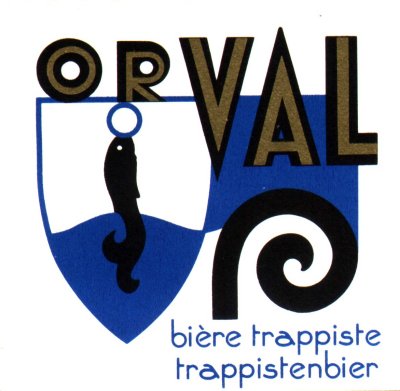|
|||
|
Philatelia.Net / Beer / Plots / The directory «Plots»OrvalThroughout the long history of Orval, there has probably always been a brewery at the monastery. Various facts corroborate this idea : topographical references on old drawings; a detailed description of production left by a Franciscan visitor three hundred years ago; an area called the "hop-field" very close to the monastery.To brew beer was customary in these areas little-suited to vine-growing. Beer was first and foremost considered for its nourishing properties : it was called "liquid bread". In 1529, the Emperor Charles Quint granted the monks authorization to establish a foundry which would provide the necessary revenues for the repair of war damages. Since that date, Orval has always known an economic activity more important than that strictly necessary for the basic economy of the Community. When Orval began to rise again from its ruins after more than 130 years, the enormous task of rebuilding the monastery required considerable financial means; a brewery was established to assume the rôle of the former foundry. In 1931 the Brewery was not, therefore, set up as a further economic activity of the monks who were already producing bread and cheese; from the very outset, the Brewery employed lay-people. The first master brewer was a German by the name of Pappenheimer; he is buried at Villers-devant-Orval. The paternity of this very distinctive beer can probably be attributed conjointly to Mr. Pappenheimer and to the Belgian, Honoré Van Zande who was present in the brewery at the same period. They were daring : the combination of production methods which they thought up is nowhere else to be found. Several of these methods, such as "dry-hopping", are English. This results in a beer whose characteristic aroma and taste owe more to the hops and to the yeast than to the malts. In the same way as the secret of fabrication, the specific beer-glass, the bottle and the label, which we still know today, are witnesses to the origins in the early '30's. Belgium, 1928, Cistercian monk stone-carving Belgium, 1928, Duchess Matilda Retrieving her ring Belgium, 1928, Duchess Matilda Retrieving her ring Belgium, 1928, Cistercian monk stone-carving Belgium, 1928, Duchess Matilda Retrieving her ring Belgium, 1928, Ruins of Orval Abbey Belgium, 1928, Ruins of Orval Abbey Belgium, 1933, The old abbey Belgium, 1933, Abbey Ruins Belgium, 1933, Guest's Courtyard, new abbey Belgium, 1933, The Trancept Belgium, 1933, Belfry, new abbey Belgium, 1933, Fountain, new abbey Belgium, 1933, Cloister, new abbey Belgium, 1933, Foundation of Orval Abbey in 1131 Belgium, 1933, Restoration of abbey, XVI and XVII centuries Belgium, 1933, Orval Abbey, XVIII century Belgium, 1933, Prince Leopold laying foundation stone of new abbey Belgium, 1933, The Virgin Mary Belgium, 1939, Monks in laboratory Belgium, 1939, Orval Abbey Cloister and Belfry Belgium, 1939, Monks harvesting Belgium, 1939, Aerial view of Orval Abbey Belgium, 1939, Cardinal Van Namur, Madonna and Abbot of Orval Belgium, 1939, Kings Albert I and Leopold III and shrine Belgium, 1940, Stained glass Belgium, 1940, Sacred music Belgium, 1940, Stained glass Belgium, 1940, Sacred music Belgium, 1940, Monks studying Plans of Orval Abbey Belgium, 1941, Monks studying Plans of Orval Abbey Belgium, 1941, Monks studying Plans of Orval Abbey Belgium, 1943, Ornamental Letter O Belgium, 1943, Ornamental Letter R Belgium, 1943, Ornamental Letter V Belgium, 1943, Ornamental Letter A Belgium, 1943, Ornamental Letter L Belgium, 1943, Ornamental Letters Belgium, 1971, Notre-Dame Abbey, Orval Belgium, 2006, Trappist beer and Geueze Advertising: |
|||
© 2003-2025 Dmitry Karasyuk. Idea, preparation, drawing up
|

